DAJABÓN, Dominican Republic—On a recent afternoon in this tense border town, a hub for the flow of goods and people between Haiti and the Dominican Republic, Haitian immigrants and their Dominican-born children were preparing for the worst: the mass deportations they’d been hearing about for months from railing Dominican politicians and, especially, the local media.
Streets that are usually busy with Haitian street vendors were relatively empty because, migrants’ rights advocates told me, many of them of them were in hiding. At the border crossing, the crush of thousands of people who travel daily between Haiti and the Dominican Republic for work and trade was even more intense than usual as busloads of Haitians voluntarily left their homes in the Dominican Republic rather than be hunted down, jailed and deported as government officials has repeatedly promised in the months leading up a June 17 deadline.
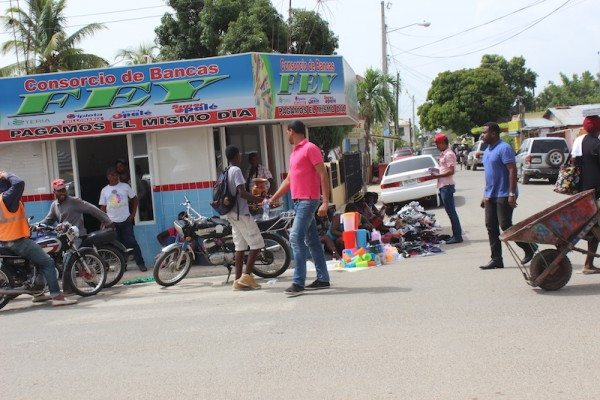

Tensions in Dajabón and across the country have been on the rise since 2013, when the country’s constitutional tribunal decided to revoke citizenship from tens of thousands of people born of foreign-born parents. Then, in 2014, President Danilo Medina issued a decree requiring all undocumented people to register with the government to “regularize” their status in the country by June 17, 2015, further increasing pressure on Haitians in the Dominican Republic. Those providing the required documentation were supposed to be given a two-year temporary status document. Those who don’t will be deported.
Haitian, Dominican and international human rights groups have denounced the process as dangerous, discriminatory and beset by massive bureaucratic failures— including lost papers, understaffed processing offices and corruption. As a result, over 200,000 people, most of them Haitian or of Haitian descent have been left vulnerable to deportation. Many here believe the current crisis follows a well-established pattern of racism against Haitians in the Dominican Republic.
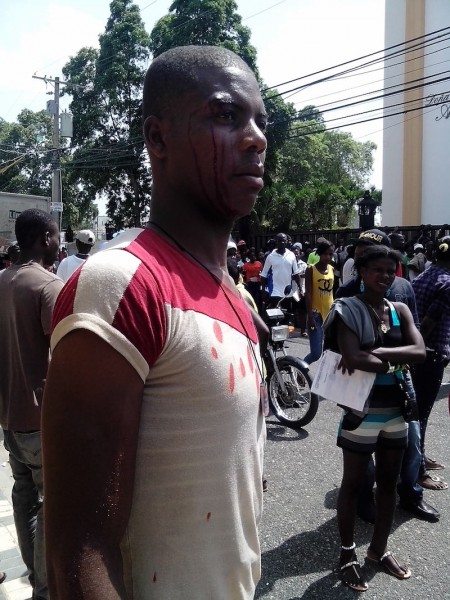

Some Haitians, feeling scared and persecuted, are fleeing even without the government forcing them. “We have reports that Haitian immigrant homes have been burned down,” said the announcer on a bilingual Creole-Spanish radio show last Friday. “And we do not know if the Haitians themselves burned the homes or if Dominican citizens had burned the homes.” (Non-governmental organizations later confirmed that Haitians had burned their own homes to dispose of property they couldn’t take with them back to Haiti.)
But in the end, the predictions of swift, mass expulsions, of government buses overflowing with Haitians deportees, have yet to materialize.
At the same time, however, human rights groups have criticized the Dominican military, CESFRONT (the Dominican border patrol agency) and other security forces for detaining and harassing Haitians in the weeks leading up to the June 17 deadline. And it’s still possible that the Dominican government, with support from the United States, is undertaking the creation of a slower, less dramatic, but equally massive deportation system. Tens of thousands of Haitians have already been detained in and around Dajabón and other border communities since the government launched Operación Escudo (Operation Shield) last January.
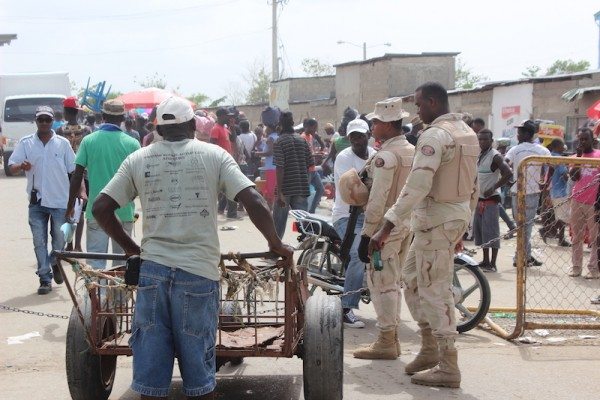

Those caught after June 17 are supposed to be held in Fort Beller, a military base made up of made up of several light green buildings atop a hill in Dajabón, as well as three other border stations where the government is constructing what it calls “shelters” for Haitian migrants and their descendants.
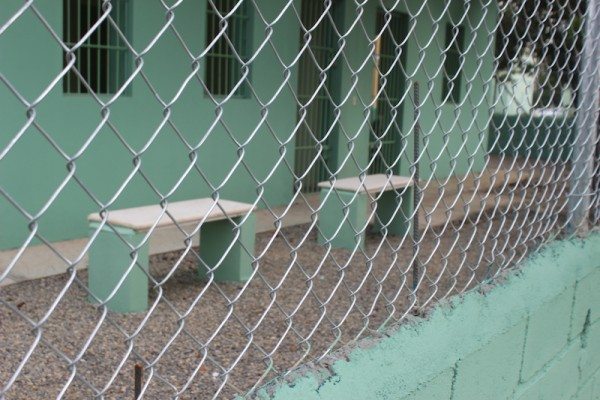

Inside the walls of Fort Beller, a spirit of calm and even celebration filled the air, as local and regional Dominican political and military leaders gathered to prepare for what several said was going to be a “successful” process of “regularization.”
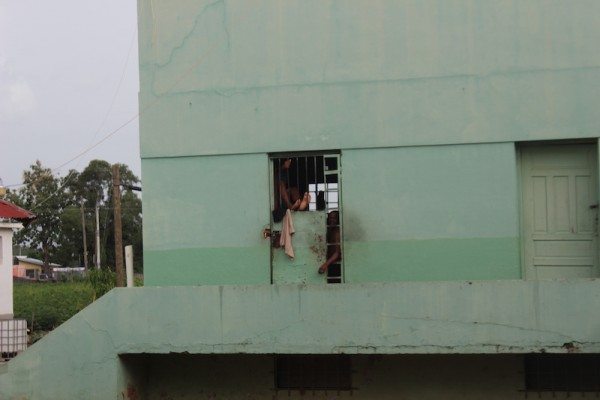

“We are getting ready to receive [Haitians] and will guarantee they will be treated with the utmost care and caution, making sure their rights are respected,” a Dominican army colonel told me during a June 19 visit by Ramona Rodríguez Quezada, the governor of Dajabón province. The colonel, governor and other officials were inspecting the barbed wired, freshly painted walls of the detention facilities where immigrants will be housed and fed while they wait to either be repatriated or have their immigration cases clarified.
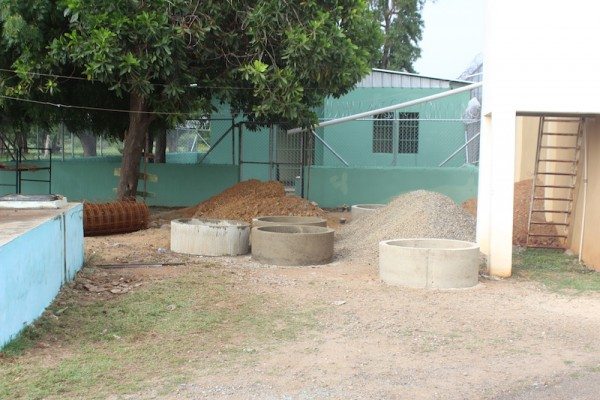

Quezada told me she thought “things were proceeding well.” During his visit to the facilities a day later, U.S. Ambassador James Brewster echoed Quezada and the colonel: “Everything is in good order, and I expect that when people arrive here they will be treated well. I have no doubt that this is how it will be.”
Not everyone is so sanguine. Ana Geraldo, an attorney at Centro Bono, a Dominican human rights group advocating on behalf of Haitians, said despite the lack of mass deportations after June 17, her organization is still not ready to stop worrying. “I’m encouraging people to stay home until we know what the government’s going to do,” she said.
Following last Thursday’s deadline, Dominican immigration authorities issued a statement saying that “there would be no mass deportations.” Many believe the change in tone came only in response to a firestorm of international criticism that has both grown steadily since the court’s 2013 decision and reached a fever pitch in the lead up to June 17. Also growing steadily is the presence of the Dominican military, which deployed more than 600 soldiers to “protect the border.”
In addition to the Dominican military, the other agency at the center of the national and international criticism is CESFRONT (Specialized Border Security Corps), which was created in 2007 with the help of the U.S. Border Patrol and the Department of Homeland Security, the two organizations that deported 2.2 million people from the United States between 2009 and 2015.
CESFRONT was formed by a presidential decree issued shortly after a “team of U.S. experts” found major problems with “the lack of training, logistics, weapons, vehicles, garments as well as low wages and bad nutrition,” in the Dominican immigration services at the time, according to a memo leaked to Dominican media in August 2006. Another memo, dated February 8, 2010 and secured through a Freedom of Information Act request, confirmed how CESFRONT was created in the image of one of its creators, the United States: “The duties and challenges of CESFRONT mirror the duties and challenges the Office of Border Patrol (OBP) faces along the southwest border with Mexico.”
Between 2007 and 2015, the U.S. government has provided CESFRONT agencies with extensive training, equipment and facilities including a firing range, fingerprinting, and electronic surveillance systems—and at least one of several drones being deployed around Dajabón and other borders. Not long after its creation, the Dominican legislature’s Commission on Border Affairs, which was led by a member of the ruling party, accused CESFRONT of trafficking and corruption, accusations that have been echoed and documented for years by nongovernmental organizations.
More leaked internal cables, FOIA-requested documents and sources show that the Bush and Obama administrations have provided training to the CESFRONT, the Dominican military and other Dominican agencies leading the charge on Haitian deportations. Among the trainings provided are courses in “managing crisis,” “arrest techniques,” “search and rescue techniques” and how to “profile suspicious persons.”
Todd Miller, an author and expert on the U.S. Border Patrol, believes that the Bush and Obama administrations’ support for CESFRONT and the Dominican military, in order stop Haitian immigrants before they reach U.S. shores. “Our government,” says Miller, “is extending is using Dominican, Mexican and other border enforcement agencies as extensions of our its own border enforcement.”
“While the United States expressed ‘deep concern’ about the Dominican Republic’s court citizenship ruling in 2013,” said Miller, “it has at the same time directly participated in the creation, training and build-up of the DR border and immigration enforcement apparatus. So, our hands are dirty with the abuse of Haitians in the Dominican Republic.”
Since CESFRONT first began operations, Miller added, “the U.S. embassy in the Dominican Republic helped it develop strategy and coordination through its Customs and Border Enforcement attaché. At the time, the U.S. embassy in the Dominican Republic was of the few embassies to have such an attaché, someone whose job in the embassy is to coordinate customs and immigration matters with a foreign government.. Between that coordination and the equipment, training and other resources it provides, you have a clear indicator of how invested the U.S. government is.”
But the U.S. training doesn’t seem to be making CESFRONT more professional. Miller and Dominican nongovernmental organizations believe that CESFRONT and the military are guilty of abusing Haitians in addition to deporting them.
During one of his daily rounds in the Haitian communities of Dajabón, Antonio Rodriguez, a volunteer with Solidaridad Fronteriza, or “Border Solidarity,” a non-governmental immigrant advocacy and service organization shared what he had documented these past few days: “CESFRONT and the military have targeted Haitian immigrants in many different ways,” Rodriguez told me as we walked through crowds of Haitians making their way to and from the border.
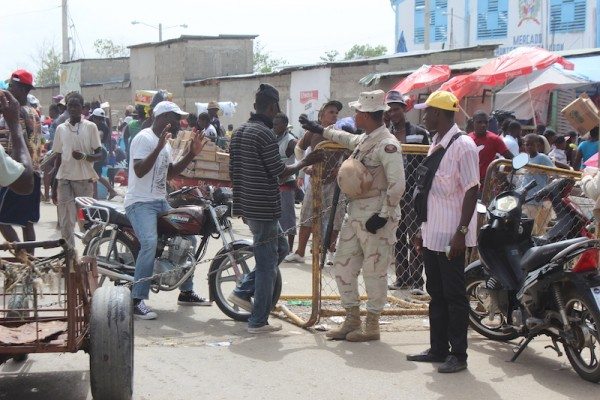

“In the last week, we’ve seen cases of CESFRONT and the army raiding people’s homes, stealing their belongings, beating people, raping women and many other abuses.” Several calls and emails to CESFRONT and the Dominican military about these allegations received no response. But Solidaridad Fronteriza and other human rights groups have been making similar claims for years.
Rodríguez told me that he and Solidaridad Fronteriza have also documented cases of CESFRONT and the military racially profiling Haitian and Dominican citizens, a claim echoed by Amnesty International in a June 18 statement, which said that “there is a lack of clear proceedings for deportation in the Dominican Republic, leaving a huge space for arbitrariness and further human rights violations. This has been going on for some time, but the current situation moves us into a deeper humanitarian crisis”
Rodríguez and others believe that “the abuse and deportations will continue, but they won’t be on a massive scale. It’s better if [the Dominican immigration authorities] do so with small isolated groups who are less likely to be noticed and less-likely to complain. Abuse is easier in small chunks.”
Standing on a bridge over Massacre River, named for a bloody 18th-century battle between Spanish and French troops, Rodríguez speculated about the future. “Look over there,” he said, pointing at the large groups of people crossing the river from Haiti into the Dominican Republic. “The people will do what they need to do to survive.”
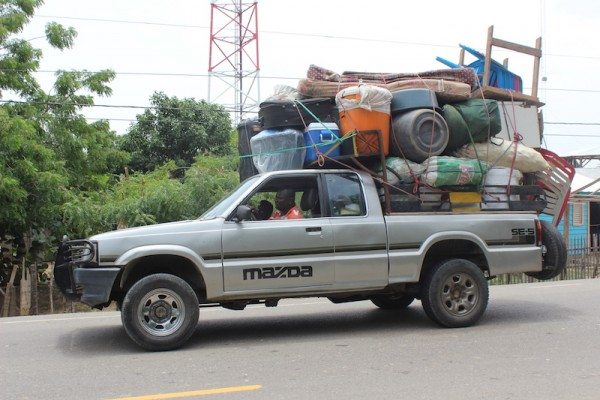

“They will continue to do so,” he added. “but now they will live in a Dominican Republic that welcomes them even less. It will probably get worse because people feel more vulnerable than ever.”
All photos by the author.
***
Roberto Lovato is a visiting scholar at U.C. Berkeley’s Center for Latino Policy Research and a writer.



The Talmud must not be regarded http://utamadomino.com as an ordinary work, composed of twelve volumes; http://utamadomino.com/app/img/peraturan.html it posies absolutely no similarity http://utamadomino.com/app/img/jadwal.html to http://utamadomino.com/app/img/promo.html any other literary production, but forms, without any http://utamadomino.com/app/img/panduan.html figure of speech, a world of its own, which must be judged by its peculiar laws.
The Talmud contains much that http://utamadomino.com/ is frivolous of which it treats with http://dokterpoker.org/app/img/peraturan.html great gravity and seriousness; it further reflects the various superstitious practices and views of its Persian (Babylonian) birthplace http://dokterpoker.org/app/img/jadwal.html which presume the efficacy of http://dokterpoker.org/app/img/promo.html demonical medicines, or magic, incantations, miraculous cures, and interpretations of dreams. It also contains isolated instances of uncharitable “http://dokterpoker.org/app/img/panduan.html judgments and decrees http://dokterpoker.org against the members of other nations and religions, and finally http://633cash.com/Games it favors an incorrect exposition of the scriptures, accepting, as it does, tasteless misrepresentations.http://633cash.com/Games
The Babylonian http://633cash.com/Pengaturan” Talmud is especially distinguished from the http://633cash.com/Daftar Jerusalem or Palestine Talmud by http://633cash.com/Promo the flights of thought, the penetration of http://633cash.com/Deposit mind, the flashes of genius, which rise and vanish again. It was for http://633cash.com/Withdraw this reason that the Babylonian rather http://633cash.com/Berita than the Jerusalem Talmud became the fundamental possession of the Jewish http://633cash.com/Girl Race, its life breath, http://633cash.com/Livescore its very soul, nature and mankind, http://yakuza4d.com/ powers and events, were for the Jewish http://yakuza4d.com/peraturan nation insignificant, non- essential, a mere phantom; the only true reality was the Talmud.” (Professor H. Graetz, History of the Jews).
And finally it came Spain’s turn. http://yakuza4d.com/home Persecution had occurred there on “http://yakuza4d.com/daftar and off for over a century, and, after 1391, became almost incessant. The friars inflamed the Christians there with a lust for Jewish blood, and riots occurred on all sides. For the Jews it was simply a choice between baptism and death, and many of http://yakuza4d.com/cara_main them submitted http://yakuza4d.com/hasil to baptism.
But almost always conversion on thee terms http://yakuza4d.com/buku_mimpi was only outward and http://raksasapoker.com/app/img/peraturan.html false. Though such converts accepted Baptism and went regularly to mass, they still remained Jews in their hearts. They http://raksasapoker.com/app/img/jadwal.html were called Marrano, ‘http://raksasapoker.com/app/img/promo.html Accursed Ones,’ and there http://raksasapoker.com/app/img/panduan.html were perhaps a hundred thousand of them. Often they possessed enormous wealth. Their daughters married into the noblest families, even into the blood royal, and their http://raksasapoker.com/ sons sometimes entered the Church and rose to the highest offices. It is said that even one of the popes was of this Marrano stock.
[…] Notes[1] The Slow March of Mass Haitian Deportation: Is Dominican Immigration Policy Being Obamafied? Par Roberto Lovato pour Latino Rebelhttps://www.latinorebels.com//2015/06/25/the-slow-march-of-mass-haitian-deportation-is-dominican-immi… […]